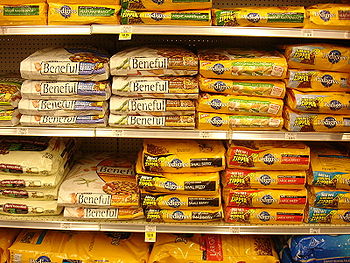
Dog Food Labels
Veterinarian Reviewed on June 20, 2012 by Dr. Janice Huntingford
How to Read Dog Food Labels
What we feed our dogs should be just as painstakingly examined as the foods we, ourselves, consume. Unfortunately, this process can be confusing as the needs of our dogs are vastly different than our health needs. However, by understanding what their needs are and hence, learning to read the product information on dog food labels, you can then make an educated and appropriate decision before purchasing. Dog food labels, similar to human food labels, are regulated by the government to ensure they meet the minimum requirements for consumption. Although this can reassure a dog owner, it should not be the point in which we relinquish all of our trust in any product. Instead, by keenly reading over the label, you can make a better assessment of the ingredients that constitute the formula. This can enrich the lives of your dogs by allowing only nutritious and wholesome food to be given.
Principal Display
The principal display is referred to as the product name. This portion of the label usually states the name and specified food in the package. It generally gives the primary meat used in the product and can also indicate which age level it is best suited for (such as part of a senior Dog Diet). Since the regulation for these dog food products need to follow a certain guideline, it is mandatory that anything titled using a certain type of meat (such as Chicken Dog Food) must contain at least 95% of that particular type of meat. This is also applicable for combination formulas in which both meat types must equal to 95% in order to use their names in the principal display. However, if the amount is less than 95% but over 25%, it must include a qualifier. These word additions don’t necessarily have to list what combination of meats are used. Instead, words such as “dinner”, “platter”, “entrée”, “nuggets” and “formula” are utilized and often confuse consumers.
Remember; don’t judge a book by its cover. The principal display can often be misleading and the informational section should be examined to ensure that the dog food meets the necessary dietary requirements for your dog.
Informational Section
The informational section is a little more complex than the principal display, but it is the most important part. The ingredient list, guaranteed analysis, feeding instructions and nutritional adequacy claim, all comprise this section. The ingredient list has to be created in a specific order. The ingredients that make up the greatest part of the food must be listed first and the lesser ingredients afterwards in descending order.
If your dog requires a high protein diet, it is best to purchase a product that has whole meats (not by-products which are high in saturated fat) in the first two slots. The guaranteed analysis lists how much each ingredient is present in the dog food. Generally, the minimal amount is listed and not the exact computation. Remember to take into account the moisture content in order to ensure a proper comparative analysis with other possible purchases.
Reading and understanding the informational section on the dog food label will help in identifying ingredients that cause Dog Food Allergies in your dog.
Feeding Instructions
The feeding instructions are present to recommend daily portions and guidelines. Of course, you must decide what is right for your dog based on your personal knowledge and recommendation from your veterinarian. The nutritional adequacy claim deals with the life stages of your dog. Thus, each product is specifically formulated for a dog within these confines and should be taken into consideration upon purchase.
Learning to read dog food labels can help you purchase the best food products for your dog.
Sign up for our newsletter and receive more articles and the latest pet health updates and special offers.
Our Expert
 Dr. Janice Huntingford
Dr. Janice HuntingfordJanice Huntingford, DVM, has been in veterinary practice for over 30 years and has founded two veterinary clinics since receiving her Doctor of Veterinary Medicine at the Ontario Veterinary College, University of Guelph. She has studied extensively in both conventional and holistic modalities. Ask Dr. Jan

